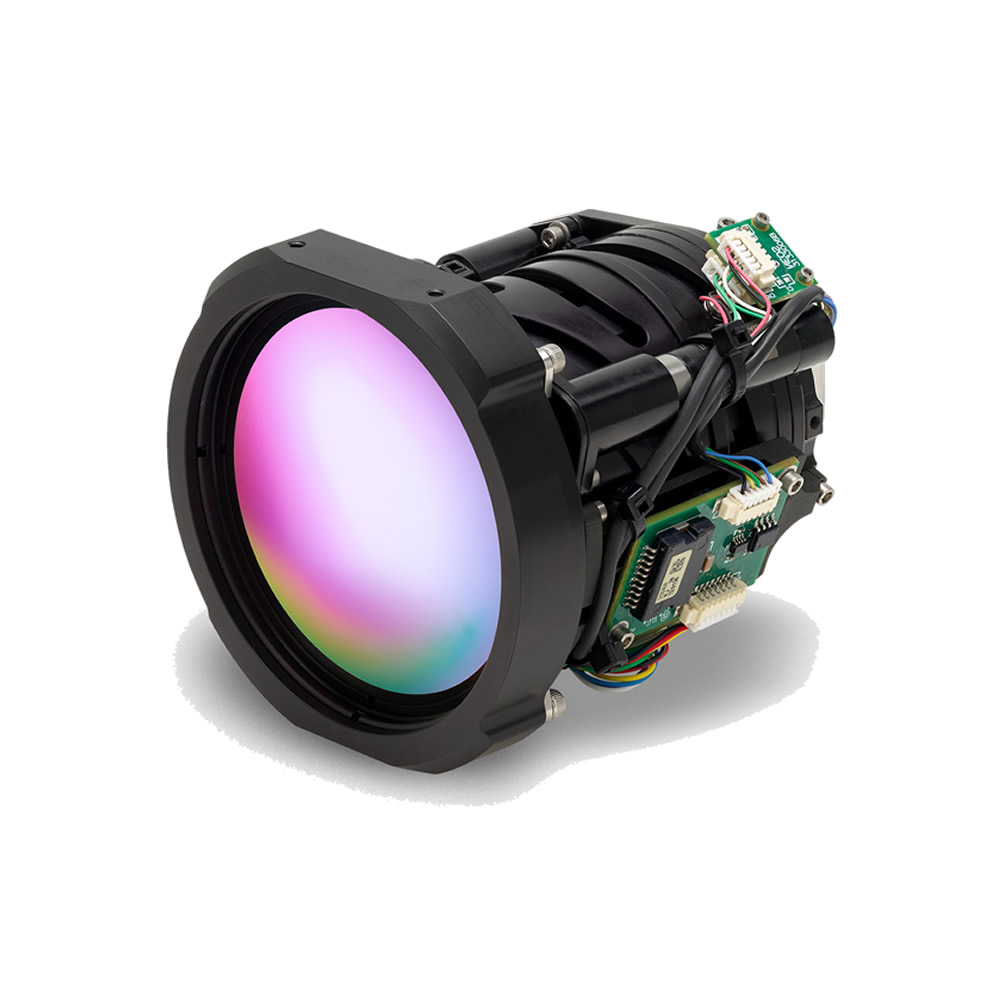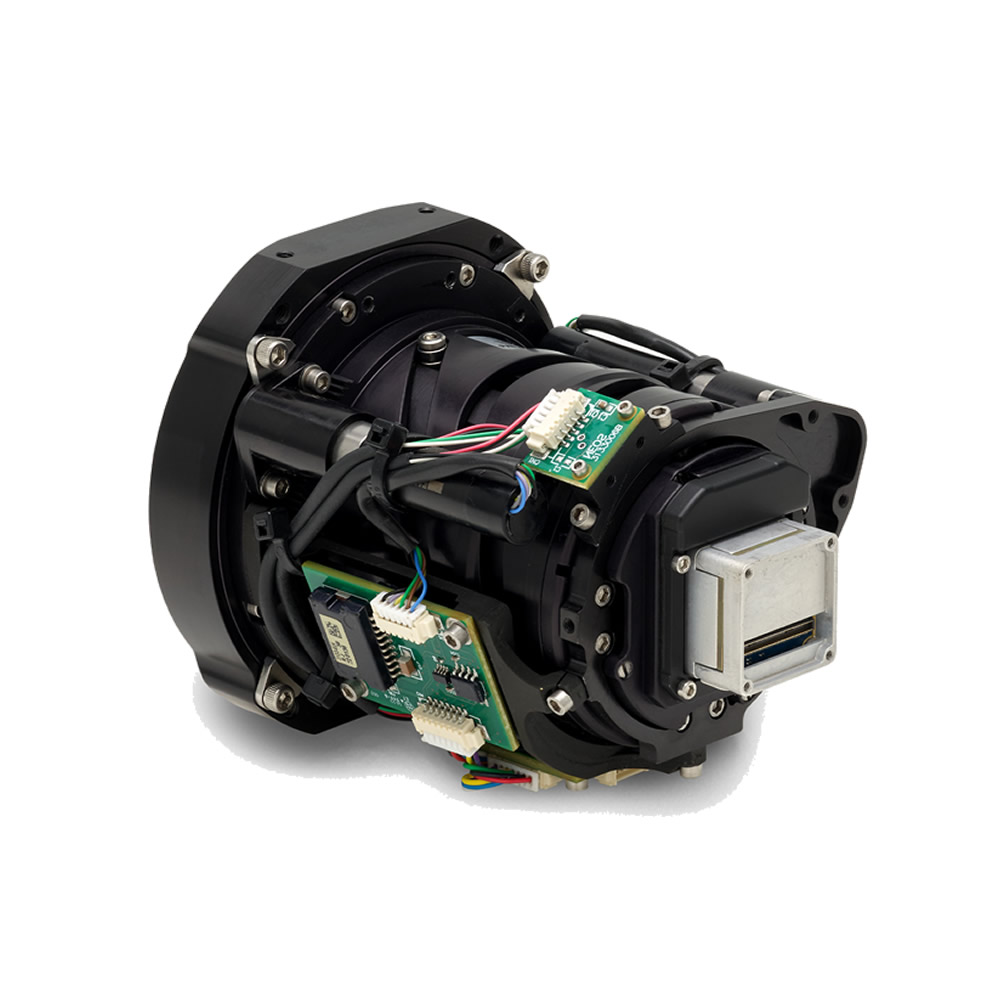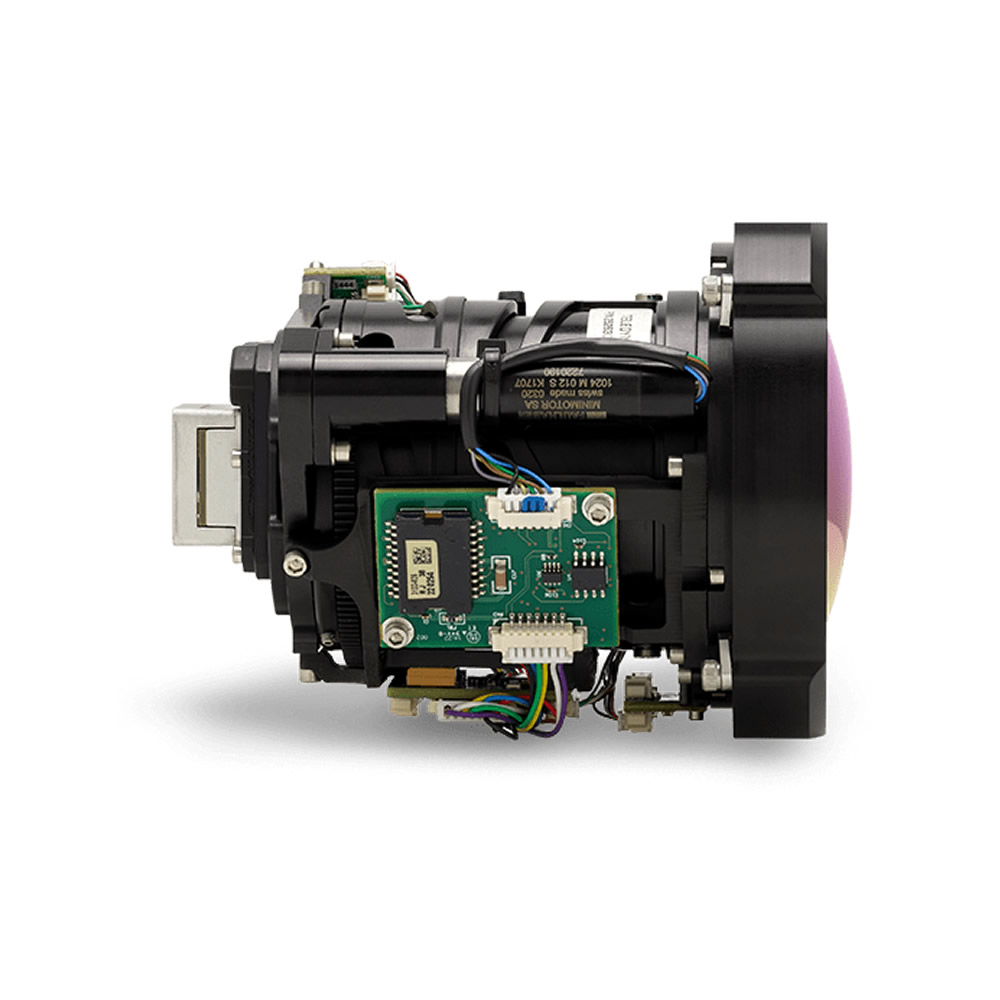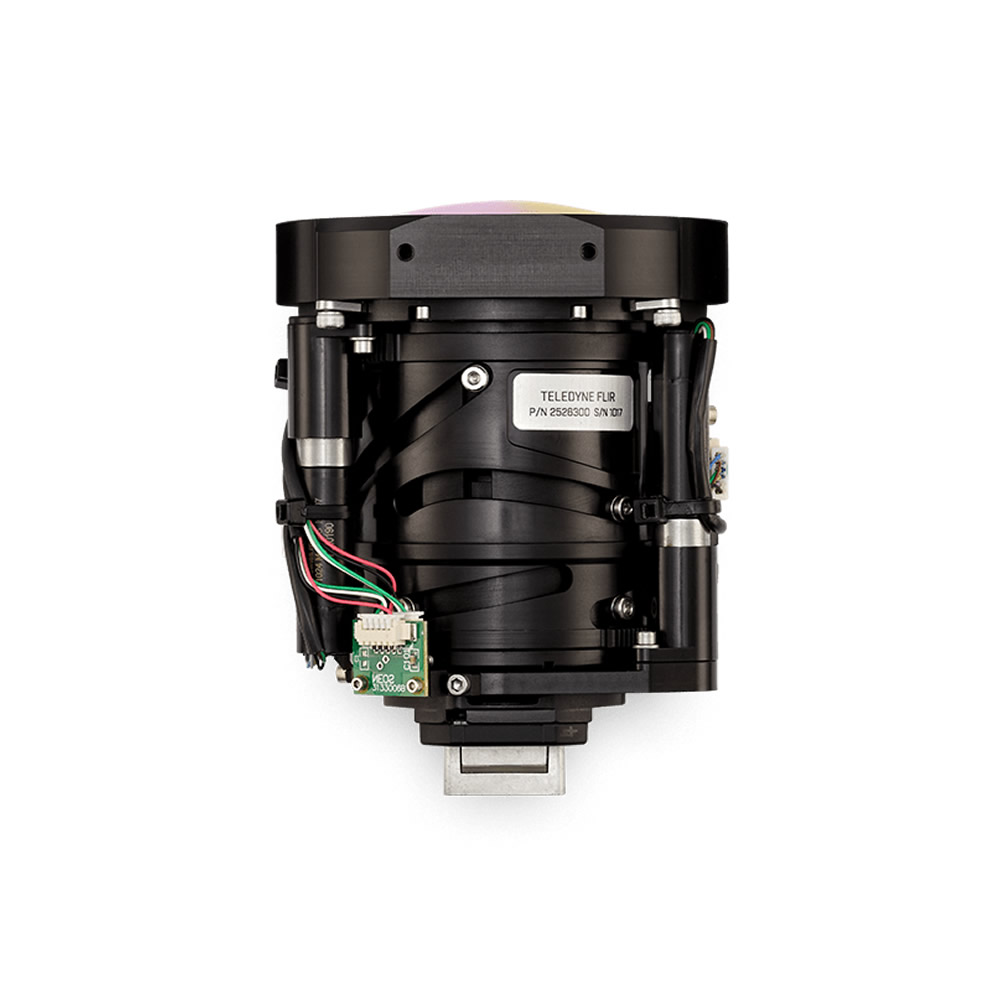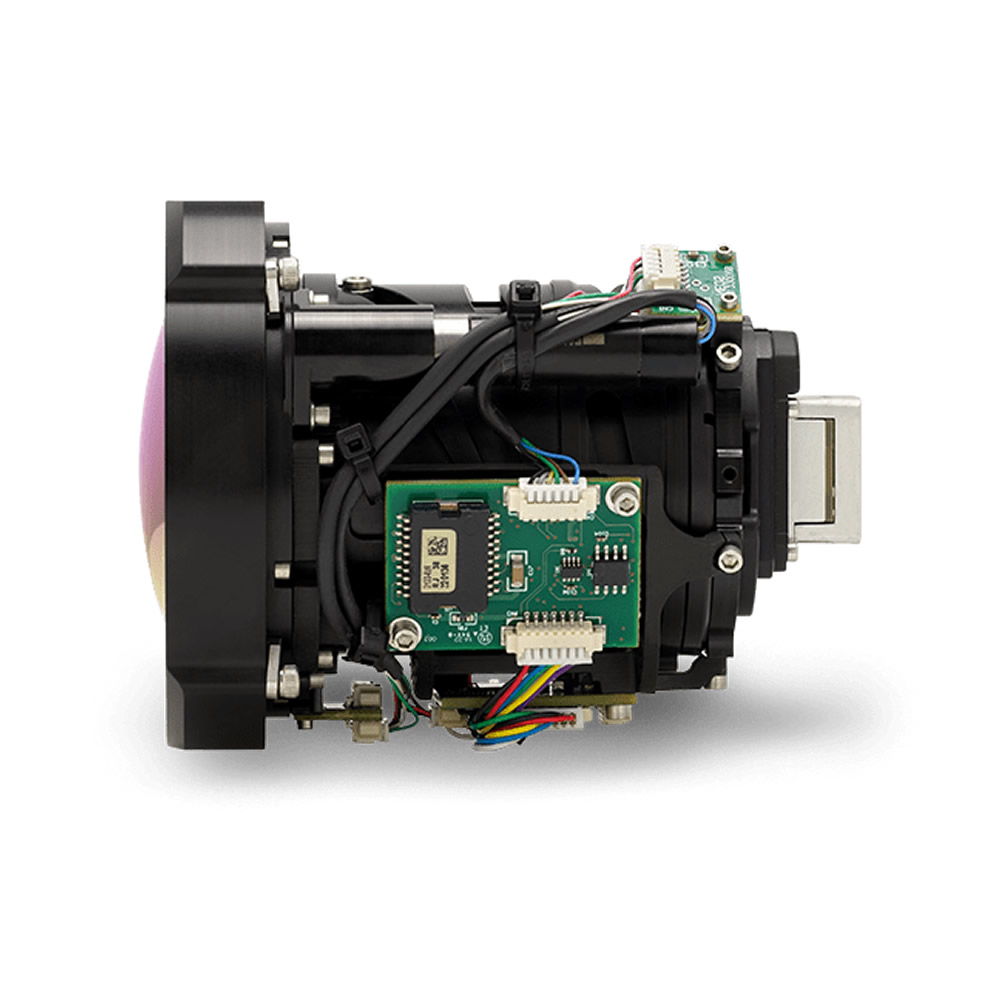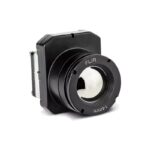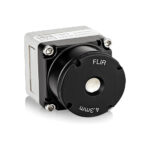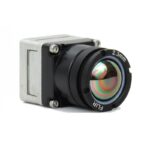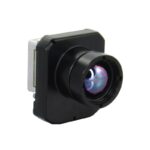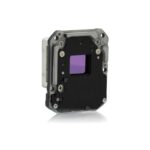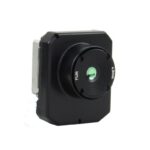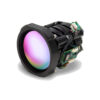Teledyne FLIR Boson+ CZ 14-75 High Performance, Uncooled, LWIR OEM Thermal Camera Module
- 640 x 512 resolution, 12 μm pixel pitch
- LWIR microbolometer
- <20 mK thermal sensitivity
- Rugged construction with an operating temperature rating of -40 °C to 80 °C
- Upgraded AGC provides blacker blacks and whiter whites
Interfaces and Accessories sold separately.
Boson®+ CZ 14-75
High Performance, Uncooled, Longwave Infrared (LWIR) OEM Thermal Camera Module
Made in the USA, the Boson+ CZ 14-75 combines Teledyne FLIR’s Boson+ world-class longwave infrared (LWIR) OEM camera module and 5x continuous zoom (CZ) lens offering a high–performance imaging solution. It features an industry-leading thermal sensitivity of ≤20 mK and an upgraded automatic gain control (AGC) filter delivering dramatically enhanced scene contrast and sharpness. The high-performance lens and control electronics maintain focus through zoom and provide real-time thermal gradient compensation as well as flexibility for user-defined command syntax and expansion for additional features.
The Boson+ camera module and 14 mm to 75 mm CZ lens are designed for each other, providing optimal performance and a single system warranty only achievable from a single source. The factory-integrated system lowers development and manufacturing risk and improves time-to-market, making the reliable Boson+ CZ 14-75 ideal for unmanned aerial vehicles, perimeter surveillance, light armored vehicle situational awareness and targeting, and soldier sighting systems.
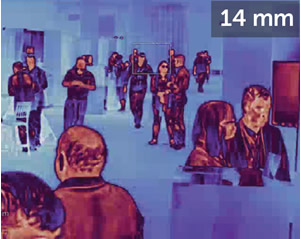
MARKET-LEADING THERMAL SENSITIVITY, CONTRAST, AND LATENCY
NEDT of ≤20 mK extends detection, recognition, and identification (DRI) performance
- 640×512 resolution, 12 μm pixel pitch LWIR microbolometer
- ≤20 mK thermal sensitivity
- Rugged construction with an operating temperature rating of -40 °C to 80 °C
- Upgraded AGC provides blacker blacks and whiter whites
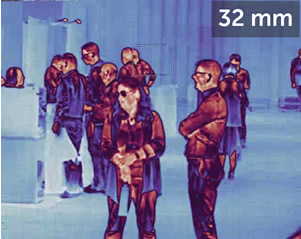
SEAMLESS OPTOMECHANICAL INTEGRATION
Camera and lens factory-designed to optimize performance and cost
- Factory alignment eliminates boresight wander through zoom
- Calibrated for maximum performance and MTF
- Object focus range compensation for near targets
- Thermal gradient compensation provides focus through full temperature range
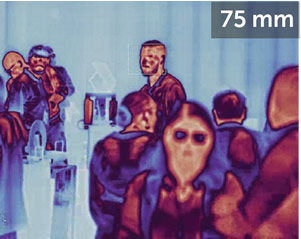
DESIGNED FOR INTEGRATORS
Advanced control electronics, hardware, and integration support simplify integration and maximize reliability
- USB, CMOS, and MIPI video output interfaces
- Flexible user-defined command aliases
- Built-in Test (BIT) provides real-time feedback
- Manufactured in the USA, dual use, and classified under US Department of Commerce jurisdiction as EAR 6A003.b.4.a
| Focal Length | |
|---|---|
| Non-Operating Temperature Range | |
| Frame Rate Option | |
| Weight | |
| Control Channels | |
| Size | |
| Design and Construction | |
| Distortion | |
| Boresight Drift Through Zoom | |
| Peripheral Channels | |
| Image Orientation | |
| Non-Uniformity Correction (NUC) |
Factory calibrated; updated FFCs with FLIR’s Silent Shutterless NUC (SSN™) |
| Operational Altitude |
12 km (max altitude of a commercial airliner or airborne platform) |
| Operating Temperature | |
| Serial Communication | |
| ESS Thermal | |
| Scene Dynamic Range | |
| Focus Change Time | |
| Video Channels | |
| ESS Vibration | |
| FOV Change Time | |
| Focus Over Temperature | |
| Solar protection | |
| IP Rating [At Front of Lens] | |
| Lens Window Transmittance |
HEAR L1: >/= 84% for band 8-12 mmDLC L1: >/= 78% for band 8-12 mm |
| Pixel Pitch | |
| Parfocality |
At 20 °C the lens shall stay in focus thru zoom within 1/4-wave at 10.6µm |
| Shock |
9G with 11msec half-sine pulse, minimum 3 pulses for each of 3 axes |
| f-number | |
| Pixel Size | |
| Minimum Focus Distance | |
| Relative illumination | |
| Thermal Sensitvity [NETD] | |
| Symbology |
Re-writable each frame; alpha blending for translucent overlay |
| Power Supply | |
| Boson Grade Option |
Professional Grade <30 mK NEDT, Industrial Grade <20 mK NEDT |
| Front Optic Sealing |
